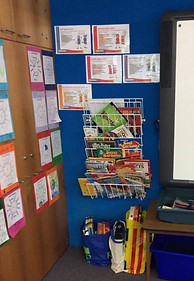The Classroom and the School
Hattie (2013) talked about how teachers “account for about 30% of the variance. It is what teachers know, do, and care about which is very powerful in this learning equation.” This relates directly to not only the physical teaching and knowledge the teacher possesses, but also the way in which the classroom is designed and set up. As said by Natasha Biddick, who is the Assistant Principal at Laurimar Primary School, many different people can portray optimal teaching and learning spaces in different ways, and it is a topic greatly argued.
Gone are the days when the classroom was set up with desks lined in rows and columns, facing the board with the teacher standing at the front. Modern day classrooms are beginning to see the importance of a visual appealing, organised classroom that sees the importance of group work.
Open plan learning spaces are one of these argued learning spaces within a classroom, viewed to offer ultimate learning. An open planned classroom enables students to learn in a way that is suited to themselves, and also allows teachers to teach in a way that could incorporate team teaching (Marks, 2001, as depicted by Biddick).
This way of organising the room directly relates to the types of furniture being chosen. Tables such as circular tables appease to a collaborative type of learning, can all students see the board from where they are sitting, having a ‘book corner’ or similar offers students a quiet, ‘safe haven’ to read, portraying the importance of physical organisation, and the big impact this has on behaviour (Woolfolk and Margetts, 2013).
As well as the physical organisation, the design of the classroom is vitally important. The colour of the classroom can change the moods of the students, eg a dark classroom may elicit sombre moods, as mentioned before the layout of the classroom, the resources scattered around the room; are they easily visible, attractive, relevant, the overall feel of the room; is it too busy? Is it to boring? Etc, , are all important aspects to consider when trying to appeal to the students and their learning needs (Read, 2010).
Ultimately, the classroom, although run by the teacher, should revolve around the students, as in the end they are the ones doing the learning. They should have a big say in the way in which the classroom is designed.

Benefits for teachers:
Allows the ability to cater for all students
Foster positive relationship between the teacher and students
Benefits for students:
Suits their learning styles
Their comfort is the aim
Promotes interactions and communication
Gives students a sense of involvement, ownership and importance
Negatives for teachers:
Sometimes lacks a set structure
Open plan classrooms can often be noisy
Negatives for students:
What appeals to some other students may not appeal to them
Some students need constant attention and direction



